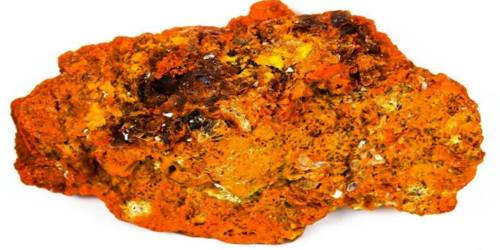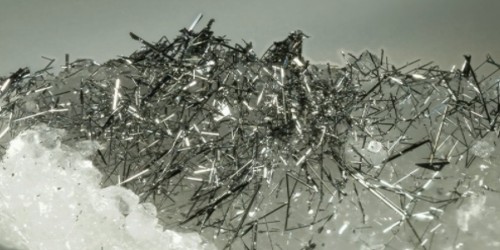Guilleminite (Ba(UO2)3(SeO3)2(OH)4•3H2O) is a uranium mineral named by R. Pierrot, J. Toussaint, and T. Verbeek in 1965 in honor of Jean Claude Guillemin (1923–1994), a chemist and mineralogist. It is an orthorhombic-pyramidal mineral containing barium, hydrogen, oxygen, selenium, and uranium. It is a rare uranium/selenium mineral found at the Musonoi Mine in the Katanga Province of the Democratic Republic of the Congo.
General Information
- Category: Oxide minerals
- Formula: (Ba(UO2)3(SeO3)2(OH)43H2O)
- Crystal system: Orthorhombic
- Crystal class: Pyramidal (mm2) (same H-M symbol)

Fig: Guilleminite – uranium mineral
Properties
This secondary mineral also includes barium in its structure, in addition to selenium and uranium. It is bright yellow in color and usually has an acicular crystal habit. It has a Mohs hardness of 2–3.
- Lustre: Waxy, Greasy, Dull, Earthy
- Transparency: Translucent
- Colour: Bright yellow
- Streak: Light yellow
- Hardness: 2 on the Mohs scale
- Hardness Data: Estimated
- Tenacity: Brittle
- Cleavage: Perfect
- Density: 4.88 g/cm3 (Measured) and 5.08 g/cm3 (Calculated)
Occurrence: In the oxidized portions of a Cu–Co sulfide deposit (Musonoi mine, Congo).
Association: Malachite, cuprosklodowskite, kasolite, marthozite, derriksite, uranophane, wulfenite (Musonoi mine, Congo).
Information Source:
















